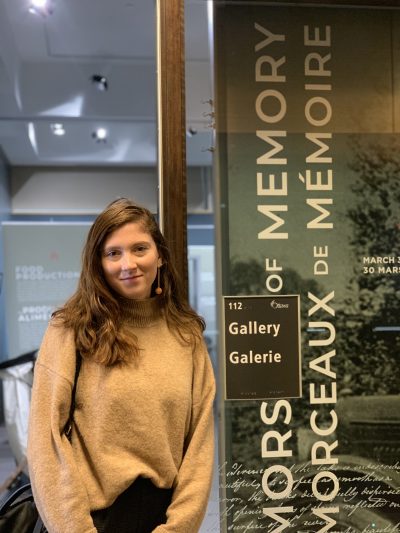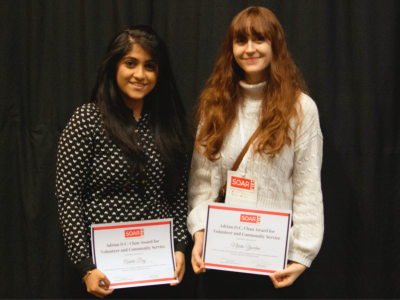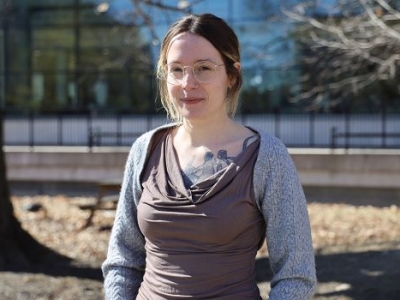 Rebecca Friend, who recently graduated with a master’s degree in Public History researched how children and childhood have been represented in Canadian commemorations like monuments and memorials.
Rebecca Friend, who recently graduated with a master’s degree in Public History researched how children and childhood have been represented in Canadian commemorations like monuments and memorials.
Along with this research, Friend also designed a participatory project with a group of children at an elementary school in Montreal where they were asked to design their own monuments to Canadian childhood.
Friend’s interest in this research piqued when working on co-curating an exhibition through Carleton’s Curatorial Studies program. The exhibition was called Morsels of Memory: A Taste of Ottawa’s Food History.
“I knew from this experience that working on exhibitions and in the field of public history more broadly was a path that interested me,” shared Friend. “However, I found that children and youth were largely excluded from these projects, both as a target audience and as co-producers on the projects. My interests therefore turned to seeing how I could meaningfully include children and youth in my public history practice and engage their input on topics that pertain to their daily lives.”
Friend created a working list of Canadian monuments and memorials featuring representations of and connections to young Canadians.
“I researched the histories of how and why these symbolic representations of childhood were produced and how and if contemporary children were considered in the creation and unveiling of these markers,” explained Friend.
Friend also developed a plan to incorporate current Canadian children’s perspectives on commemorative markers into her research. She did this by incorporating Canadian children’s drawings and designs of monuments into an exhibit to show the perspectives of some of the discipline’s most unrepresented voices.
The new alumna chose to focus her research on children as children and youth have often been included symbolically in Canadian commemorations as symbols of innocence and national prosperity, as tools to evoke an emotional response.
“Working with contemporary children to counteract this disregard will hopefully inspire more public historians to develop meaningful projects with this population,” said Friend.
Friend has also worked as an intern on the Canadian Children’s Museum renewal project at the Canadian Museum of History.
“It’s been a fantastic experience putting my research interests into practice in such an established institution,” emphasized Friend. “In addition to my Public History MA, I have also pursued a Curatorial Studies Graduate Diploma. It has been an incredibly rich opportunity to do research on a curatorial project that really treats children and their interests seriously.”
Dr. Monica Patterson, an AssociateProfessor in the Institute of Interdisciplinary Studies, supervised Friend throughout her research.
“With a wealth of interdisciplinary knowledge covering childhood and youth studies, curatorial studies, anthropology, and public history – her help and feedback has moulded my work and shaped it to be something more creative and sustainable than I could have imagined,” said Friend.
After completing her MA, Friend plans on continuing public history work designed for a young audience that chooses to meaningfully include their feedback and perspectives.
Said Friend: “Whether that’s in a museum setting or on a more specialized project, making sure children and youth’s voices are being amplified will hopefully be at the forefront of my work.”
–The above story was written by Taia Goguen-Garner.
Wednesday, March 4, 2020 in Grad Student Research, News
Share: Twitter, Facebook




